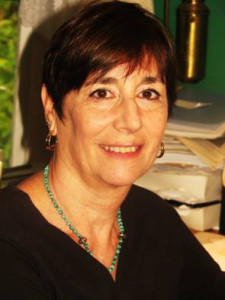Care coordination for seniors is increasingly complex. Clinicians and caregivers – who are usually family members – often track multiple specialists, multiple medications, and multiple plans of care. As the “old-old” population, those 85+, continues to increase, this issue is becoming more prevalent.
A panel of geriatric care experts discussed these challenges and possible solutions at the Association of Health Care Journalists conference in Boston this week.
Sharon Levine, MD, professor of medicine at Boston University School of Medicine and Chair of the Geriatrics subspecialty board at the American Board of Internal Medicine is concerned about the shortage of primary care providers, nurses, therapists, and mental health professionals who specialize in this field.
Only 7,000 physicians are certified in geriatric medicine – about 3.5 for every 10,000 patients. Many med students want to practice in more financially lucrative areas, largely due to astronomical medical school debt, she said. This disparity is only going to increase as baby boomers eventually move into the “very old” category.
She also pointed out that because caregiving does not happen in a silo, an interdisciplinary care team – nurses, allied support specialists, and especially family caregivers – must do more.
The challenges of caregiving multiply exponentially if an older person has mental health issues like clinical depression or bipolar disorder, Bert Rahl, LISW-S, director of mental health, Eldercare Services Institute at the Benjamin Rose Institute on Aging in Cleveland, OH, noted that mental health issues cut across all demographics, and it can be difficult for family caregivers to identify mental illness, since cognitive decline is normal in the elderly.
Additionally, 75 percent of those 65+ manage at least one chronic health condition, seniors so medication side effects, over- or under-dosing, and drug-drug interactions can impact mental health.
“Non compliance in mentally ill seniors is a big issue,” he said. “Some may not remember and others may be afraid to take certain prescriptions because of negative side effects.” Getting seniors to comply with medication regimes is a roller-coaster process. WIthout caregiver involvement, success will be limited, he added.
Terry Ellis, PhD, PT, assistant professor, College of Health and Rehabilitation Sciences at Boston University and director of BU’s Neuroscience Rehabilitation Center, said when it comes to therapy for older patients, the goals of the patient must be kept top of mind. “To some, the ability to walk in their backyard without fear of falling is a major accomplishment,” she said. Others may need more intensive regimes, like OT or PT following a stroke. Everyone on the team should be involved – from the therapists to nurses, to social workers – to help people recover as much independence as possible.
Another ongoing challenge to care coordination is reimbursement. Yet without long-term clinical support, many patients stop progressing and almost always get worse over time. That’s an issue which must be addressed. “Otherwise they are going to end up back in the hospital or in nursing homes,” she said.

Helping Grandmother Walk (Photo credit: Rosie O’Beirne)
That currently means more of the burden is picked up by the family caregiver, said Susan Reinhard, PhD., RN, Senior Vice President, AARP Public Policy Institute.
There are an estimated 42.1 million family caregivers in the U.S., usually someone in their fifties, primarily women, although more men are taking active roles. More than half (26.5 million) work full or part time outside the home. Additionally s/he may have a child in college, or still living at home, and struggle to maintain some balance between caregiving and the rest of their lives.
The majority of family caregivers provide much more care than basic daily living tasks like cooking; they tackle everything from bathing, to incontinence, wound care, managing medications or using home medical equipment. Most of the time there is no formal training.”It’s no surprise we find high levels of frustration, anxiety, and depression,” she said.
Care transitions and ongoing care coordination would be impossible without family caregivers, she added. “They deserve our full support.”
Care coordination for older adults is complex, stressful, and frequently frustrating. These experts agree that more funding, incentives, and social support are needed to boost the number of medical and mental health providers, change reimbursement structures and provide the social support needed by family caregivers.
Liz Seegert is a Senior Fellow at the Center for Health, Media & Policy
Care coordination for seniors is increasingly complex.
 CHMP’s is working to make nurses nationally media ready through our program, Nurse Messenger, part of our Media & Leadership Training for Health Professionals. Nurse Messenger media training provides nurses the tools, skills, and confidence necessary to participate in the media’s coverage of health issues, and to reach the public with their messages.
CHMP’s is working to make nurses nationally media ready through our program, Nurse Messenger, part of our Media & Leadership Training for Health Professionals. Nurse Messenger media training provides nurses the tools, skills, and confidence necessary to participate in the media’s coverage of health issues, and to reach the public with their messages.





